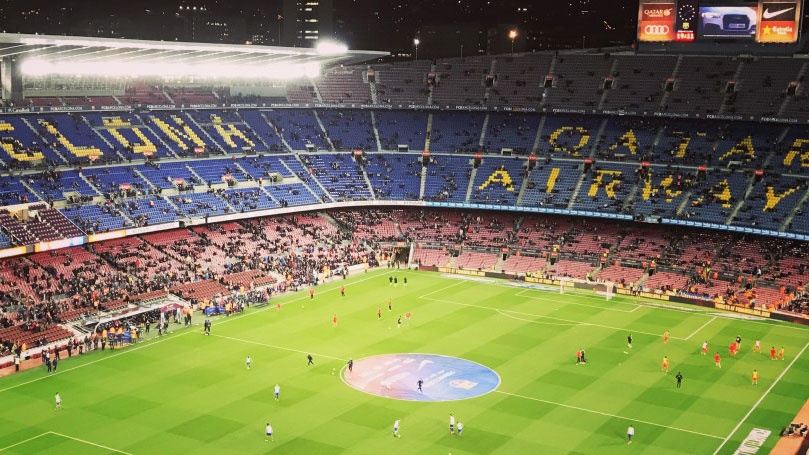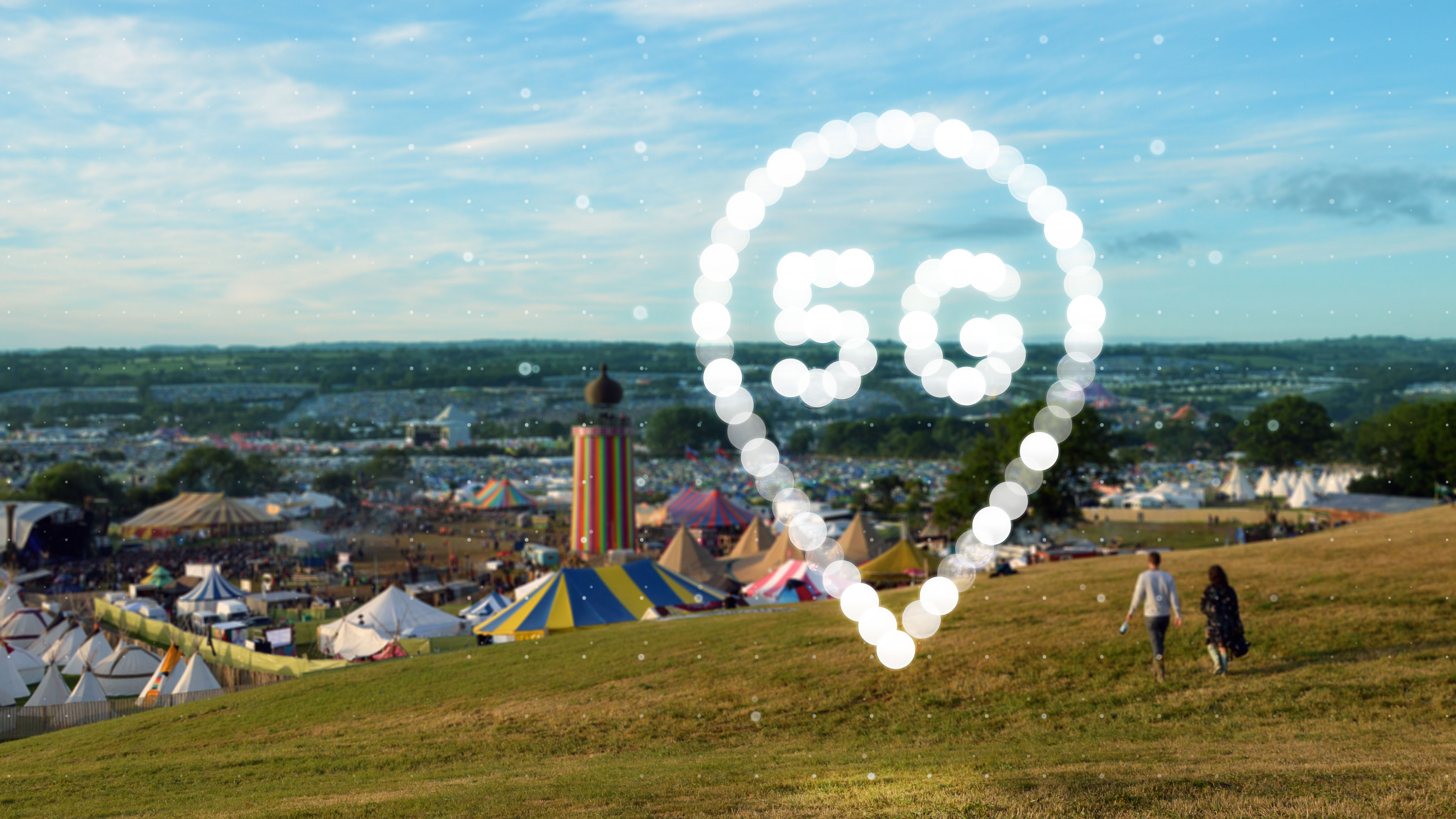Will 5G solve signal issues at stadiums, festivals and venues?
Mo spectrum, fewer problems

Big events with thousands of people in attendance put a huge stress on mobile networks, meaning you’re often unable to message your friends to meet up, upload videos to social media, or livestream your favorite band playing their final encore.
That’s largely due to the concentration of people using spectrum in one location over a standard 4G (or perhaps even 2G or 3G) signal, which means the connectivity can crash out and become unusable for the majority of a crowd.
But with 5G just around the corner – it’s set to launch in the US and UK in the coming months – we may see a solution to the problem soon, with the next-gen mobile network offering faster speeds as well as further spectrum, allowing more people to be online at the same time.
Could 5G be the final piece of the puzzle to ensure you’re always connected even in a crowd of thousands? A lot of the big driving forces behind 5G believe so, but most of the focus has so far been on alternative (and headline-grabbing) uses of 5G, like virtual reality and super smart IoT (Internet of Things) devices.
Sports first
Research commissioned by software specialists Amdocs suggests that most people will first experience 5G connectivity at a major sporting event. That makes sense considering Vodafone plans to cover 19 cities by the end of 2019 with its 5G signal, while EE is limited to 16, so most of us won’t be able to get 5G in their hometown right away.
The Amdocs report also found that 63% of network operators plan to offer augmented reality or virtual reality experiences at sporting events using 5G tech – that doesn't exactly solve the problem of crowded mobile networks that limit your social media use.
Gary Miles, Chief Marketing Officer at Amdocs said: “Operators have identified these events as the springboard for rollout of a whole range of new interactive and immersive services. This will give consumers their first real taste of what 5G can deliver and allow operators to showcase the capabilities of their next-generation networks."
Get daily insight, inspiration and deals in your inbox
Sign up for breaking news, reviews, opinion, top tech deals, and more.
“Expect to see the first of these new services and applications rolled out in conjunction with the 2020 Olympics in Tokyo and soccer tournaments in Europe, among other big events in the sports calendar. We will also see operators becoming integral to the growth of esports with 5G opening the door to future investment and revenue opportunities.”
Perhaps the first sign of that is FC Barcelona’s stadium – that’s the Nou Camp – which is set to be the first stadium in the world to get a dedicated 5G network. An exact release date for the technology in the stadium is yet to be unveiled though.
Rather than simply allowing you to use your phone in the big crowds, a lot of the focus from FC Barcelona has been around the new experiences 5G enables. For example, the new tech could allow for 360-degree video and real-time virtual reality experiences at the game itself.

Festival fever
The same is true of festivals, which also have a high concentration of people in one area for short amounts of time. Attendees are sure to be using their devices lots, and it’s something the world’s major festivals are looking at improving.
The UK’s first 5G connected festival is set to be Glastonbury 2019 (that’s at the end of June), which is expected to have over 135,000 people attending before you take into account staff and security – most of which will also be using mobile networks.
It has been set up by EE (the UK’s largest phone network) which has always been a technology partner for the festival; and unlike Barcelona FC's plans, this is much more about offering top speeds on your average device rather than enabling virtual reality experiences.
In a field watching your favorite band play, it’s arguably less useful to have extra experiences like VR or AR, which is perhaps why EE wants to focus on improving mobile signal at Glastonbury.
As such, EE's marketing around the event has centered on how people at the festival will use an estimated 70 terabytes of data.
"Smartphones have become a festival must-have as we've seen each year with more and more data being consumed at Glastonbury Festival," said Pete Jeavons, Marketing and Communications Director at BT and EE.
"As the long-standing technology partner to this iconic event, we are committed to building a network powerful enough to cope with this huge demand.”
That huge demand is down to festival-goers downloading maps and timetables to navigate around Glastonbury’s 900-acre site, as well as uploading video to social media, messaging their friends or just looking up artists' stage times online throughout the entire weekend.

No 5G device needed
So will you be able to get the benefits of 5G at this year’s Glastonbury? Yes – and you won’t even need to have a 5G device.
If you have one, that’s great and those on EE should be able to get far better connectivity throughout the entire festival. Those that don’t either of those things will still be able to make the most of the 5G technology as the Wi-Fi at the event will be also using the next-gen tech.
As connectivity improves, some believe the way we interact with our devices at large-scale events is set to change too. We won’t know exactly how attendees will change their behavior until the technology's readily available, but the possibilities are exciting.
It may mean more livestreaming while in a crowd, or it may just allow those attending these events to meet up with their friends more easily and access important information as and when they need it.
While 5G Wi-Fi will be available at Glastonbury, that’s not necessarily the case for other festivals and stadiums around the world. That means you may need a 5G device to make the most of the new connectivity tech, and those are set to be very expensive for the foreseeable future.
For example, the Samsung Galaxy S10 Plus costs $999 (£899, AU$1499) in the US, but the 5G variant of the phone is $1,299 (about £1,000, AU$1,900), so 5G devices aren;t exactly accessible to everyone yet.
We aren’t likely to see the full change to 5G at live events for a few more years, but connectivity in crowds is only set to get better in the coming months and years with access to 5G Wi-Fi and general 5G signal improving regularly.
In the next five years, expect to be able to use your phone to a fuller extent at live events, and hopefully you’ll easily be able to message your friends and never get lost in the crowd again.
5G Uncovered, in association with Samsung, brings you everything you need to know about the next wave of connectivity - not just how fast it's going to be, but in just how many ways it's going to change your life. Our 5G Uncovered hub is carefully curated to show everything there is to know about the next generation of connection.
James is the Editor-in-Chief at Android Police. Previously, he was Senior Phones Editor for TechRadar, and he has covered smartphones and the mobile space for the best part of a decade bringing you news on all the big announcements from top manufacturers making mobile phones and other portable gadgets. James is often testing out and reviewing the latest and greatest mobile phones, smartwatches, tablets, virtual reality headsets, fitness trackers and more. He once fell over.
